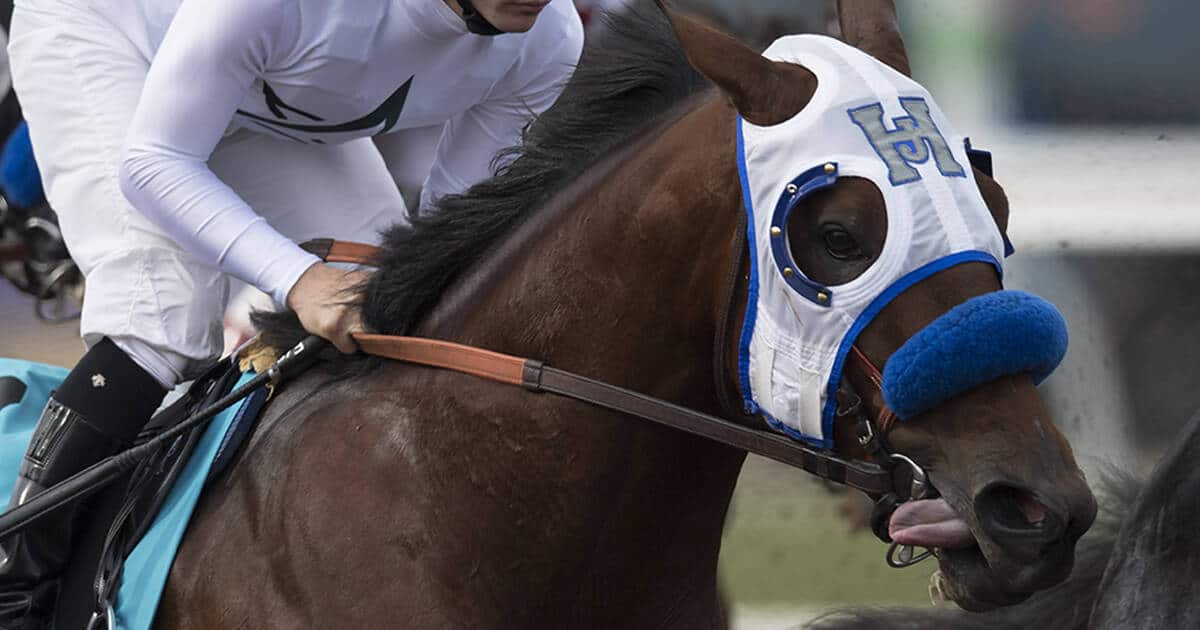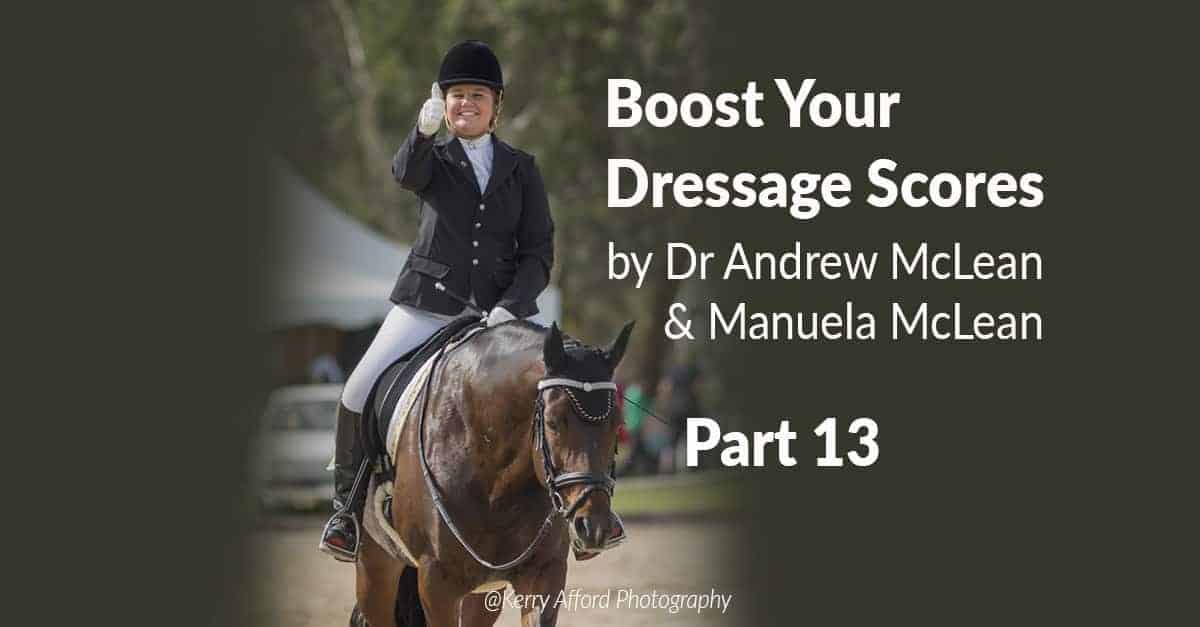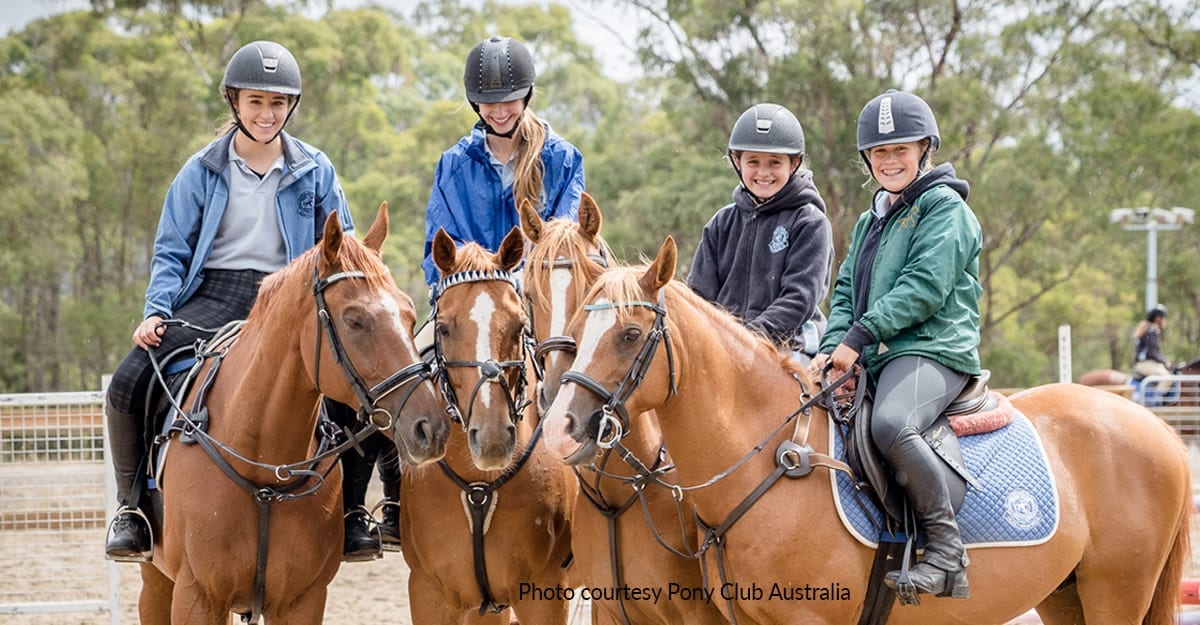Sometimes, horses get their tongues over the bit. When this happens, the tongue may loll out of the mouth in a very unsightly way, and all hope of achieving a good contact or communication line with the horse’s mouth will be lost. In horse racing, it is believed a tongue over the bit will impair the horse’s airway.
The traditional approach to dealing with horses who get their tongue over the bit has been to prevent them from opening their mouths using a tight noseband, fitting a specialised correction bit designed with an extended plate that prevents the tongue from coming over the mouthpiece and, in the disciplines where it is permitted, such as Thoroughbred and Standardbred racing, tying the horse’s tongue down to the bottom jaw using an elastic band or a nylon stocking.
We asked two world renowned horse trainers and equitation scientists, Dr Andrew McLean from Equitation Science International and Kate Fenner from Kandoo Equine, why some horses put their tongues over the bit in the first place, and whether there is a way to prevent or re-train this behaviour without using the traditional restrictive equipment that impinges on their welfare.
This article discusses the training and behavioural aspects only and is meant to be read in conjunction with the article by equine dental veterinarian, Dr Shannon Lee, which discusses how to assess the bit and bridle fit the horse well, and are not causing pain and injury.
Dr Andrew McLean, ESI
Q: Why do some horses put their tongues over the bit?
People see tongue over the bit as a resistance (on the part of the horse), but I’m really sure it has all to do with training mistakes; that is, mistakes made using negative reinforcement when teaching the horse to stop, slow and turn from rein signals.
In all the years I was starting horses, I never had tongue over the bit problems with young horses I started myself because I trained stop, turn and go clearly on the ground, in the correct number of footfalls and from a light aid.
Lightness is the big one.
During the initial stages of training, we use pressure, but it’s our responsibility as trainers to remove the pressure when the horse gives the correct response and to quickly transform those pressures into light aids, like postural cues, that are no longer aversive.
Q: Why are some horses more prone to tongue over the bit than others?
I think putting the tongue over the bit may be a way of grabbing hold of it to stop the bit pressure from hurting in other areas. Whichever way, as soon as the horse learns to have a light stop, slow and turn, it changes everything.
I used to see tongue over the bit problems when I got horses whose owners were unhappy with how they had been started by other trainers. They sent them to me for ‘re-breaking’. These horses often had tongue over the bit problems, and they were often resolved when we taught them to stop and slow in the correct number of footfalls and from a light aid.
Q: What causes the horse to try getting the tongue over the bit?
Occasionally, with breakers, I’d have a stage of lolling the tongue about as if to experiment where to put their tongue when the bit was in the mouth.
Once you resolve the slowing aid (the horse responds to a light aid and pressure is released, so the horse can continue in self-carriage), they are really happy to leave their tongue under the bit.
In bad riding, however, horses never find a release from pressures and this is why I think that, tongue over the bit and many other training issues, have a lot to do with mistakes in negative reinforcement – people don’t prioritise training their horses to be in self-carriage, to stop and slow to light aids, and they expect their horses to put up with unrelenting rein pressure.
You see this a lot in racing. Racehorse trainers are really only managing the flight response. They don’t train the horses to accelerate, decelerate and turn. In particular, they don’t see the necessity of training the stop and turn buttons. But, they do hold on to the horses’ mouths. When you use the horse’s mouth to purchase your weight on, you create your own problem, and that’s why so many racehorses and horses off the track have tongue over the bit issues.
I think that, at least in Australia, there’s a culture of controlling where horses’ heads are during exercising. The jockeys are taught to make the horses ‘round’; they call it ‘putting them on the bit’. They are taught to put their thumbs in the mane, screw their hands and make the horses’ heads low but, in doing so, they confuse the bit responses. The young horse who needs to learn bit pressure means either stop, slow or turn is made to go forward with unrelenting bit pressure, and they just get more confused.
In racing as in all other disciplines, if they taught all horses to go in self-carriage (that is, to stay in their speed, shape and line), to accelerate, decelerate and turn from light aids, the horses wouldn’t need to resort to other ways to relieve the pressures (such as the tongue lolling) and the riders wouldn’t have to worry about the head position. That part falls into place itself because the head is a consequence of good balance and perfect, light control of the limbs which, in turn, can only be achieved if horses are in self-carriage – it is not the other way around.
What is self-carriage?
Self-carriage is keeping the same speed, line and posture without being held or cued constantly by the rider or handler. Self-carriage should be the highest priority and aim of all trainers.
Kate Fenner, Kandoo Equine
Q: Why do some horses put their tongue over the bit?
Some horses have never been properly mouthed, like off the track horses, and some horses have had bad experiences with bits, or have had their mouths clamped closed with tight nosebands and other equipment. When you take that equipment off, the horses’ first reaction is to open their mouths – who can blame them?
Trying to get the tongue over the bit is simply an attempt to get away from the bit pressure – the horse is trying to relieve the pressure in its mouth. If you are not training using negative reinforcement – using the pressure as a motivator and releasing immediately the horse responds with the correct movement – you are subjecting the horse to an unrelenting pressure and the horse is left with little choice but to evade.
Let’s take the horse that hasn’t been started yet. If you introduce the bit gently and you get the horse to find where the release of bit pressure is (for example, when I train ‘give to the bit’ – see the article on Page 76), then the horse won’t be experiencing the discomfort or pain that leads to such behaviour.
Q: What is mouthing?
People talk about ‘mouthing’ a young horse, but there really is no understanding at all of what the aim is. If you ask 10 different people, you get 10 different answers. The old-fashioned idea of mouthing was to de-sensitise the horse to the bit pressure, which is really the opposite to what you want!
This misunderstanding also extends to the term contact. Everybody’s definition of contact is different. A ‘good’ contact for me might be a rein tension of 5 newtons (approximately 500g) and to another it might be 15 newtons of rein tension (approximately 1.5kg). We really need to work out what the contact is telling the horse.
Looking at modern dressage, horses are often ridden with a huge amount of something we call contact, but to the horse, it is unrelenting pressure. The correct use of negative reinforcement requires a release of pressure.
Q: Are opening the mouth and tongue over the bit resistances?
I am not keen on using the word resistance because it implies something negative on the part of the horse. If you put pressure on any part of the horse, there are six directions it can move that part of the body in an attempt to relieve the pressure.
Let’s say you put pressure on the left rein and focus on the left nostril; the horse can move it up, down, left, right, forward or back. If you don’t release on one of those movements (the one you want), you are no longer using negative reinforcement, you are now using punishment and the horse will try another way to relieve that pressure.
Q: Can nosebands and specialised bits help resolve mouth opening and tongue over bit issues?
I never use nosebands during training. Regardless whether I’m mouthing a young horse or training an older horse, I want to know what the horse is thinking. I don’t want to clamp his mouth shut with a noseband or try a correction bit just because he tries opening his mouth. I will, of course, check there are no underlying dental issues and the bit fits comfortably in the horse’s mouth, but I’m not going to try and stop him from opening the mouth.
If the young horse opens its mouth while I’m training, that tells me its uncomfortable and it’s my responsibility, as the trainer/rider, to make sure the horse is not uncomfortable.
Horses learn patterns very well and this pattern is a basic and easy one for the horse. Let’s say we’re teaching ‘turn left’ and pick up pressure on the left rein, while opening it away from the horse’s neck. As soon as the horse responds by stepping left, we must immediately release that pressure. With good timing, the horse anticipates the pressure and begins to respond more quickly – meaning significantly less pressure is required to achieve the same response.
As riders, we should always be looking for ways to reduce the required amount of pressure to elicit a response.
Q: What are some of the common training mistakes you see that may lead to tongue over the bit issues?
People tend to focus a lot on the cue. They often ask what the correct cue is for a particular movement, but the correct cues are whatever you teach your horse to respond to! The horse was not born with those responses built in – unless you’ve taught them, he won’t know. The horse only learns the meaning of a pressure cue when he finds the movement that earns the release.
Another common problem I’m asked about is: “My horse loves trail riding, but hates the arena”. This is because the rider makes things confusing in the arena, such as making the horse go in a frame, be round, use his back, and so on. They forget, when they are out trail riding, they are training them just as much.
On the trail, they may be distracted or chatting to their friend, and don’t realise they are holding on to the horse as they walk, perhaps using 10 newtons of rein tension. They forget they are desensitising the horse to that amount of pressure. Whenever you hold pressure without changing or moving something, then you are desentising the horse to that level of pressure – there is no reward, no release, the horse must just put up with it.
Then, when they go back into the arena and they want to ride a nice circle or a half-pass, they have to add another 10 newtons to get the same response and the horse is subjected to a much higher pressure again.
Whether you are in the ring or in the bush, you are still training your horse. You should still be aware of the pressures you are using and you need to remove the pressure when you get the response you want.
Q: Is it possible to re-train tongue over bit?
I find the horses that have had the worse experiences – the ones subjected to the most meaningless pressures (the racehorses and high-level dressage horses, for example) take a little longer to get ‘give to the bit’. That’s when you should take off all the superfluous and restrictive equipment. Take the noseband off and put them in a soft snaffle that is comfortable. When you pick up pressure with these horses, most of them will go: “Oh yeah whatever… I don’t care about that” because they’ve been desensitised to such high levels of pressure.
The pressure is the motivator, right? They’ve been taught to ignore the pressure, to put up with it, they’ve been taught there’s nothing they can do to make it go away. It’s your job to teach them something new. With the correct use of negative reinforcement, you can re-establish that light cue-response.
Many of these desensitised horses, especially the racehorses, have never been involved in the learning process before. This is because, in general, racehorses are pushed into things, they become a number, and being responsive to light cues is simply not a priority for their trainers.
They are muscled through things and this is why they end up needing 300 metres and 80 newtons of rein tension to stop after a gallop, which is simply ridiculous.
If you involve the horse in the lesson, if you get the horse in the Engagement Zone where he or she can say: “Oh wow, all I need to do is move and all the pressure goes away!” When those horses suddenly become engaged in learning, they pick it up really, really well.
It takes a few more minutes initially to re-train a desensitised horse, but when they work out it’s actually easy, they will learn very quickly. You pick up pressure, the horse gives, you release the pressure.
If you slow your training down now, the horse learns the pattern so well that, as soon as you go to pick up pressure, the horse is already responding. When the horse maintains gait, line, speed and posture, you have a light horse that is in self-carriage.
Q: Are there any other aspects that would influence the success of re-training contact or tongue over the bit issues?
Getting the horse’s arousal level right will influence the success you have with any training and this is the trainers responsibility. You need to get the horse into what I call ‘the Engagement Zone’ before you start the lesson.
If the horse is too aroused already, then you have to go back to something simpler. You should not be training anything until the horse is relaxed enough to take on the lesson.
Above all, as a trainer, you have to remember that if your horse is opening the mouth or putting his tongue over the bit, he does not understand what pressure means. He’s simply getting frustrated or confused about the pressure – there’s something wrong with the pressure, not with the horse. By trying to stop him opening the mouth, or restricting the freedom of the tongue, you are just masking a training problem.
It is our responsibility as owners/riders/trainers to train without pain and we owe it to the horse not to compromise his welfare by preventing normal oral behaviours such as movement of the tongue and opening the mouth with the use of restrictive devices.
What is negative reinforcement?
Negative reinforcement is about using pressure and, particularly, using the release of pressure to reinforce what you are teaching.
The term has a negative connotation because of the word ‘negative’ in it, but it is meant in the mathematical form, that is, the removal (of pressure) to reinforce a behaviour or movement.
There are two key aspects to training using negative reinforcement correctly, these are:
- Timing the release to the moment the horse tries the correct movement.
- Quickly transforming the pressures you use into the lightest cues possible.
Both of these are equally important.
Further reading:
- International Society for Equitation Science (ISES) First Principles of Horse Training
- ISES Position Statement on Aversive Stimuli in Horse Training
- ISES Position Statement on Restrictive Nosebands
- ISES Position Statement on Alterations of the Head and Neck Posture in Equitation



















I agree partly with what you have said about horse ‘s tongues over the bit and all such problems should be corrected. However my experience is that 90 per cent of the problem is incorrectly adjusteds bridles. At rest a bit should just touch the horse’s lips without any creasing or without any space. As simple as that. Betty Lane
It’s a very depressing read. We don’t need bits. The equitation scientists understand Negative Reinforcement, so why don’t they apply that knowledge to teaching behaviours without reliance on the bit. I would expect they are interested in improving equine welfare and we can do that via removing the use of and need for bits. We can train anything with Negative Reinforcement and in fact, even better, via Positive Reinforcement, therefore there is no need for bits.